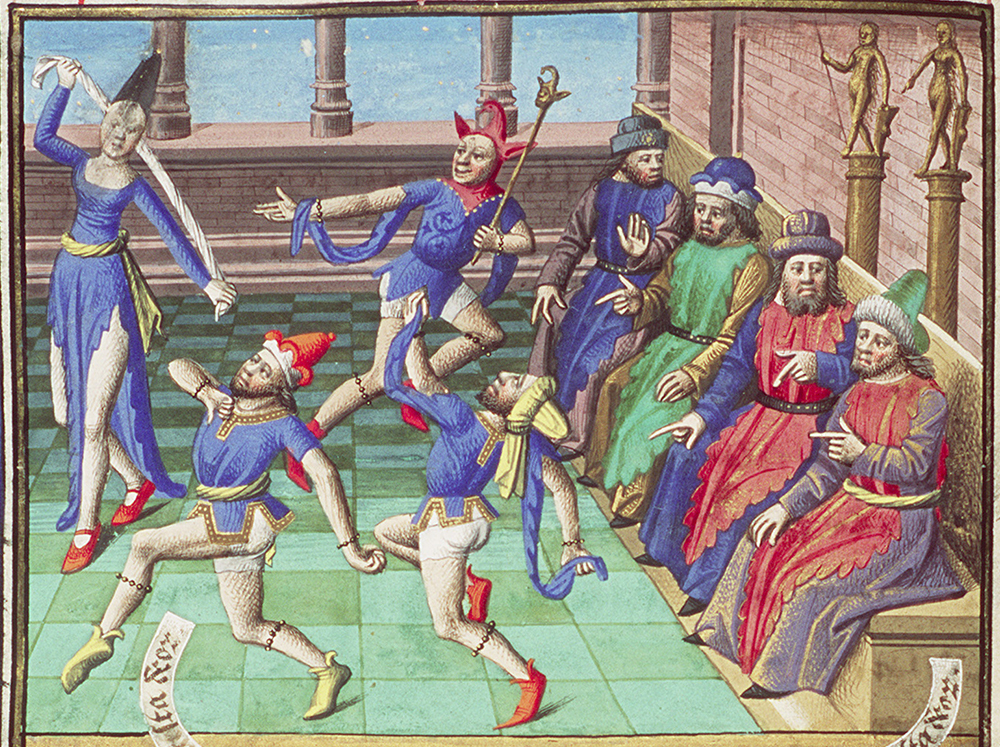What happens in this picture ?!
In this picture, we see four people dancing with gay abandon, while four men look on. The picture comes from The City of God, a book written in the fifth century by Augustine of Hippo. This copy dates from the late fifteenth century; a whole millennium later.
What happens in this picture ?!
In this picture, we see four people dancing with gay abandon, while four men look on. The picture comes from The City of God, a book written in the fifth century by Augustine of Hippo. This copy dates from the late fifteenth century; a whole millennium later.
dance
💃🕺
This is the Mediaeval version of an illegal rave. People didn't dance in the Middle Ages, at least not officially: it was considered inappropriate. You can see that the men on the right disapprove of the dancers by the way they are pointing their fingers. Of course people did dance occasionally in the Middle Ages, like we do now that we're not allowed out, or when we go to an illegal party. The people who danced in the Middle Ages were thought to be raving mad or possessed by the devil. And it gets better: people also danced when they were hallucinating. Mediaeval people often ate bread made from mouldy wheat. That doesn't just taste a bit funky - it works like LSD. It makes you dance wildly, as if you're possessed by the devil. So this was another reason why dancing wasn't OK.
📖
The author of this book is Augustine. In his book, he wrote about the difference between life on Earth and life in heaven – the earthly city and the city of God. He criticised ancient Roman beliefs and promoted Christianity. This picture shows what isn't allowed in the city of God: dancing. So why paint a picture of dancing if it's so wrong? Simple: people got off on looking at things that weren't OK. Just like we enjoy watching Temptation Island or Real Housewives.
This book also contains half of the French translation of the Latin text of The City of God. It was written around 1478 in France. The other half is still around too, but it's kept in a library in France.
